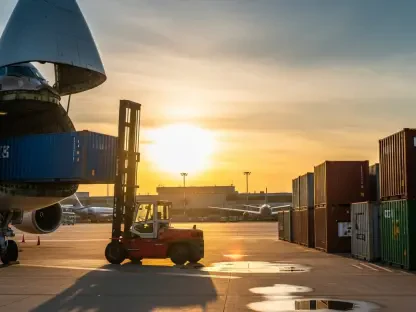Americans have sent 46 billion envelopes in the last year, but that is far from enough to save USPS from going under. The movement to privatize the U.S. Postal Service carries implications that extend well beyond Capitol Hill. Transforming a public utility into a profit-driven enterprise would reshape the economics of nationwide delivery. The crucial question is not whether reform is necessary, but how businesses will adapt to the ripple effects of a fundamentally altered logistics backbone.
A fully private USPS would operate on a single mandate: profitability. This shift would force it to behave like its competitors, FedEx and UPS, triggering a cascade of changes in pricing, service levels, and network coverage. For logistics leaders, viewing this as a distant political issue is a critical mistake. Any move toward privatization, whether full or partial, will reshape the last-mile landscape, and preparing for that volatility is now an essential part of strategic planning.
The agency’s financial struggles are well-documented, with a reported loss of $9.5 billion in fiscal year 2024. While reform is necessary, a profit-driven model would dismantle the very structure that makes the Postal Service a unique and critical player in the logistics ecosystem: the universal service obligation. Read on to see how USPS privatization could reshape the national delivery network, impact shipping costs, and challenge supply chains across the country.
The End of a Logistics Safety Net
The Postal Service is legally required to deliver to every address in the country at uniform prices, regardless of the location’s remoteness or profitability. This obligation creates a safety net for logistics, supporting many business models, particularly in e-commerce. Currently, more than half of the carrier routes operate at a loss, yet they continue to operate.
On the other hand, a private company, not bound by this rule, would make decisions differently. It would likely cut unprofitable routes first. This shift extends beyond rural service. It represents a complete rethinking of the national delivery network. A privatized USPS would likely reduce its footprint of more than 33,000 post offices, replacing many with lower-cost models, such as third-party access points, similar to those used by UPS. The result would be a network concentrated in profitable metro areas, while rural and remote regions face fewer delivery days and higher rates.
How Privatization Models Could Reshape the Market
The discussion around privatization often implies a straightforward switch from public to private ownership, but the reality is more complex. The path chosen would have vastly different implications for shippers.
Full Privatization: The entire entity is sold to private investors. In this scenario, expect aggressive cost-cutting and a laser focus on the most profitable service: packages. Mail delivery would likely be scaled back, and prices for all services would rise to market rates.
Partial Privatization: A partially privatized firm is owned by both private shareholders and the government, which could be the best way forward for the mail service. This would create a new, aggressive competitor in the parcel market but could leave the legacy mail service with even fewer resources.
Managed Competition or Franchising: The government could retain ownership but franchise routes or regions to private operators. This could lead to a patchwork of service levels and pricing structures, adding immense complexity for national shippers seeking consistent service.
Each model dismantles the current system in a different way, but all point to the same outcome for B2B professionals: increased costs and greater complexity.
The Inevitable Rate Shock for Shippers
A privatized USPS would have to raise its prices significantly to become self-sustaining. One analysis suggests parcel delivery prices would need to increase by at least 30% to achieve a reasonable return. Today, Postal Service pricing is often 25% to 60% lower than its private counterparts, a discount that would quickly disappear.
Mini-Case Study: The Rural E-commerce Merchant
Consider a small business in rural Arizona that sells handcrafted goods online. They rely on USPS Priority Mail flat-rate boxes to ship products nationwide at a predictable cost. For them, the universal service obligation isn’t an abstract concept; it’s their lifeline to a national market.
In a privatized model, their shipping costs would no longer be uniform. A package to New York City might become 50% more expensive, while a shipment to a nearby town could remain the same. They would face a new “rural surcharge,” which would force a complete overhaul of their pricing strategy and potentially make them less competitive against urban sellers.
For larger shippers, the loss of USPS as a low-cost option would give private carriers, such as FedEx and UPS, immense pricing power. With the market’s floor for delivery rates raised, both companies could increase their own prices without fear of losing volume to a cheaper public alternative.
The Ripple Effect on the Broader Carrier Market
While a privatized USPS might seem like a win for its competitors, the secondary effects are more complicated. Too few delivery days in certain regions or unreliable service could prompt some shippers to switch to alternative carriers, but the loss of the Postal Service’s last-mile network could also create problems.
FedEx and UPS currently rely on the Postal Service for final-mile delivery for some of their lower-cost services. A 2022 report noted that these partnerships are critical for cost-effective rural delivery. If that last-mile network shrinks or becomes more expensive, these companies would have to invest billions to build out their own comprehensive rural infrastructure or simply stop serving those areas.
This creates an opportunity for regional carriers and logistics startups to fill the gaps, but it also signals a future of network fragmentation. Shippers in the country will not be able to depend on one or two carriers for all their shipping needs. Instead, they will have to work with many different regional providers.
A Change is Coming
Regardless of the political outcome, the underlying financial pressures on the Postal Service guarantee that change is coming. Logistics leaders must prepare their supply chains for a future with a less predictable and more expensive postal network.
Audit Your Carrier Dependency. Quantify your precise reliance on USPS services. Analyze shipment data to determine the percentage of your volume that is handled by the Postal Service, with a special focus on rural zones and non-contiguous states, such as Alaska and Hawaii.
Model Cost Scenarios. Run financial models to project the impact of a 20%, 30%, and 50% increase in postal rates on your profit margins and overall logistics budget. Identify which product lines or customer segments are likely to become unprofitable.
Diversify Your Last-Mile Partners. Begin researching and piloting regional carriers and delivery startups in your key markets. Building these relationships now creates redundancy and provides a hedge against future price hikes and service reductions. Don’t wait for a crisis to find alternatives.
The path forward for the U.S. Postal Service is uncertain, but its direction is clear. The era of a subsidized, universal logistics network is under immense pressure. The companies that will thrive are those that treat this uncertainty not as a political headline but as a core strategic challenge to be managed today.
Conclusion
Privatizing the U.S. Postal Service will test the resilience of every supply chain in the country. The universal service obligation, which has long ensured consistent and affordable delivery, would no longer be guaranteed under a profit-driven model. Shippers face real risks, including higher costs, fragmented networks, and more complex operations. Companies that identify their dependencies, run scenario analyses, and diversify last-mile partners now will be better positioned to navigate these changes. Preparing today is the most effective way to manage the coming uncertainty.









